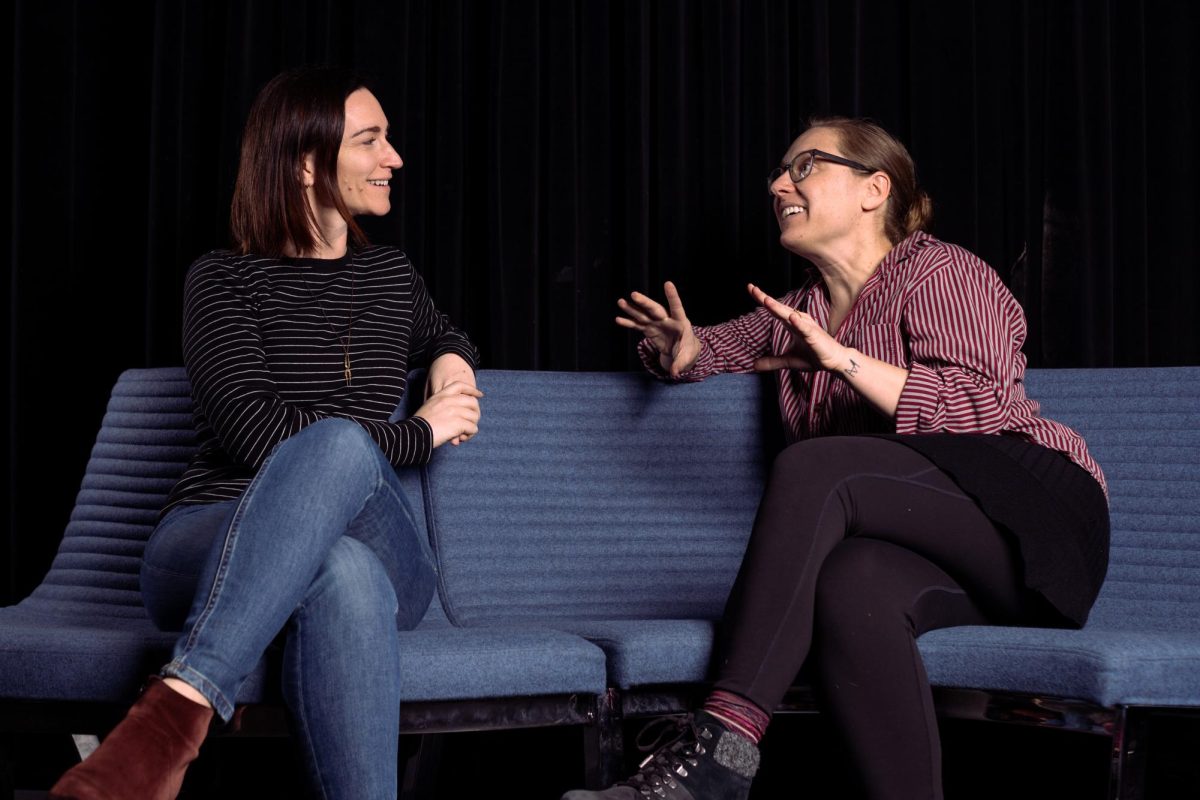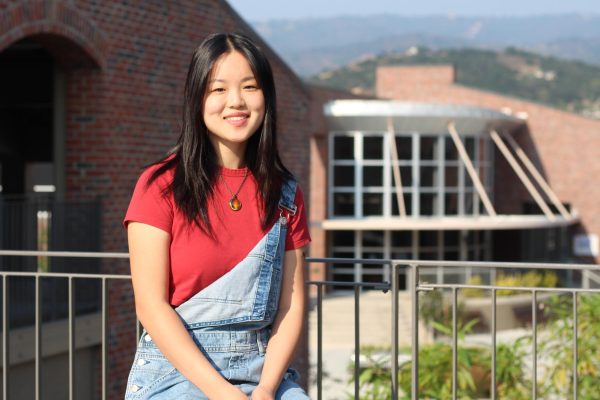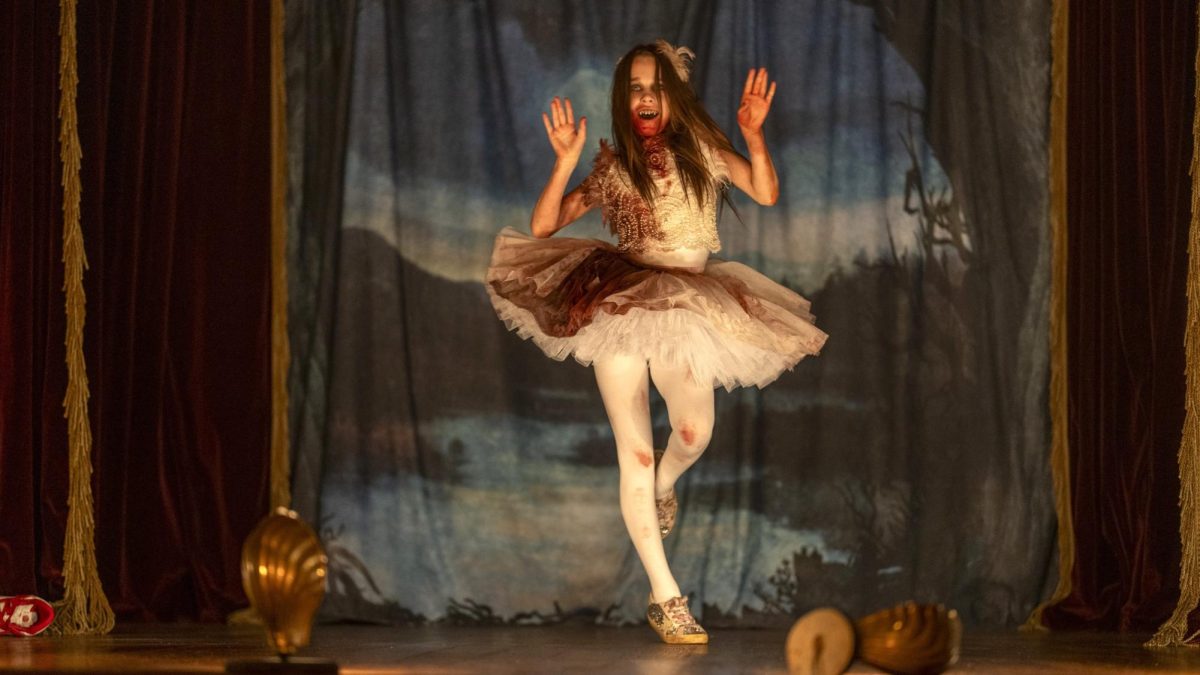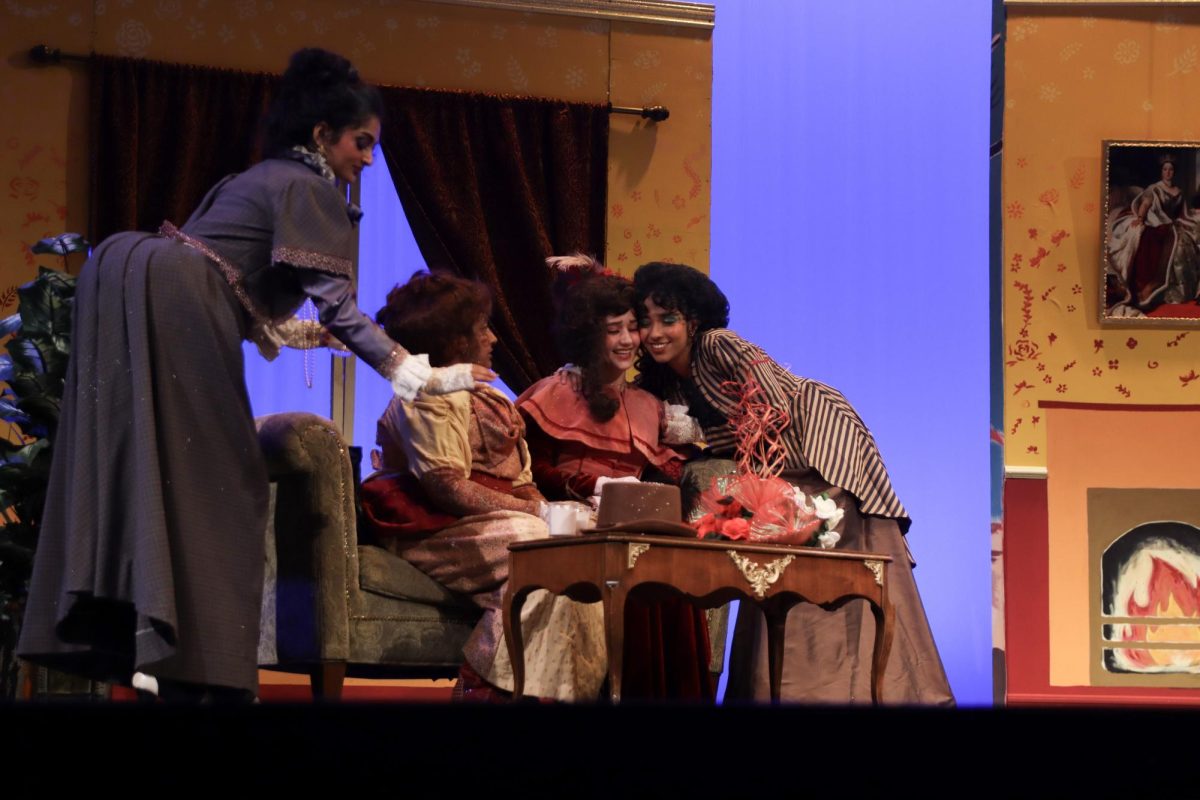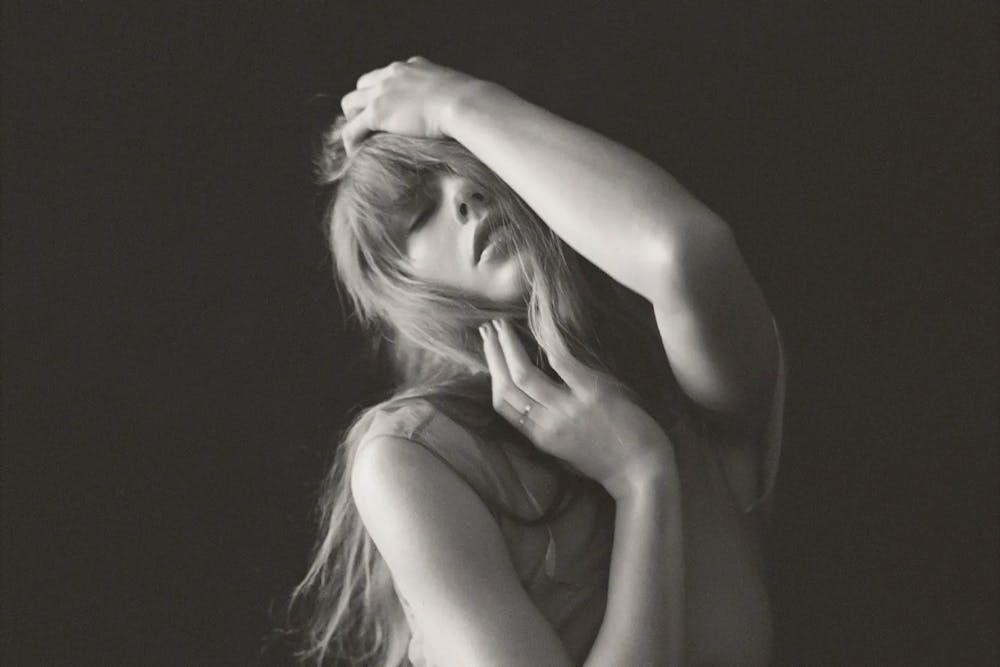As the bell rings to signal the end of the school day, sophomore Ryan Li eagerly leaves his seventh period class and makes the trip down to the MVHS string room to meet his friend and creative partner junior Megha Mummaneni. The two Marching Band members have less than an hour to delve into today’s topic before practice starts. In the quiet open space of the string room, the silence is broken as Li hits record.
“Hey Vibers! Welcome to the second episode of Tunetalk, a music podcast hosted by two high school students. In this weekly podcast, we will be delving into aspects of music culture like high school marching band, concert band, music albums, artists and much more. If you’re interested, keep listening.”
Having met in Marching Band, Li says he and Mummaneni bonded over their shared passion for music. The pair began their music podcast, “Tunetalk,” this school year and have been releasing weekly episodes on YouTube. Each episode, the co-hosts engage in a conversation over a particular music topic or new release that interests them. Li says podcasting provides a forum for their casual conversations about music to reach people in the community who share the same fervor for music.
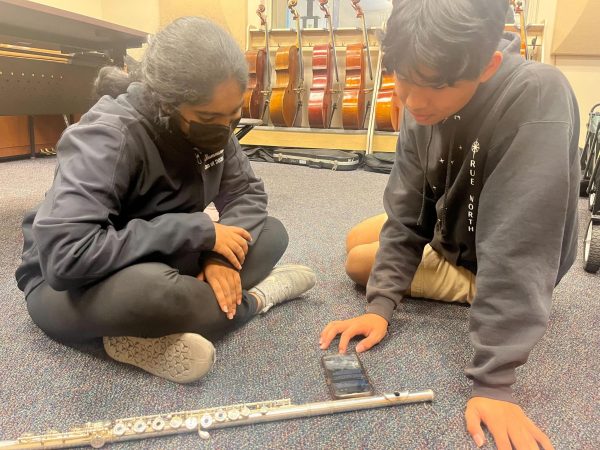
“We just want to talk about our own ideas on music and [podcasting] makes it a lot easier to reach a bigger audience and see what other people’s opinions are,” Li said. “It’s not really about making an impact, it’s more just about sharing our own thoughts and letting other people feel comfortable in order to share their own thoughts with us. We [can] create a community that’s really welcoming and very open to other people’s opinions.”
Similar to Li and Mummaneni, English teachers Vennessa Nava and Hannah Gould host “That Was Weird,” a film analysis podcast which blossomed from casual exchanges of film discussion between the two colleagues. When the podcast started, both teachers were teaching Honors American Literature (HAmLit), which uses distinct critical lenses to interpret text, such as feminist theory, critical race theory and Marxist theory. Nava and Gould apply the same critical frames to interpret films on the podcast.
“Those [lenses] are just really high leverage ways to interpret any given text, because those are things that shaped our lived experience so deeply,” Nava said. “Some of the initial impulse or motivation was that if students were to be in HAmLit and also listen to these, that we’re expanding the range of texts that you might bring these critical lenses to. It might expand their recognition of what you can do to interpret even something that just seems like a movie on the weekend.”
Apart from broadening the use of critical framing to new areas of media, Nava says the podcast is mostly a recreational outlet for her to explore her film analysis hobby. While Gould had already been putting out her creative work online such as posting comedy YouTube videos, Nava says this podcast was an opportunity for herself to step into getting her own creative ideas more into the public.
“I think that [the podcast] is just a more public version of the kinds of conversations I would already engage in with Ms. Gould,” Nava said. “I think it’s just another little window into the kinds of critical engagement that makes me excited and I love to engage in, so I don’t think I’m really focused on audience-ship and how we market [the podcast]. None of that is really why I’m doing it. It’s really just a great excuse to meet at pretty regular intervals and talk and do a deep dive with one of my closest friends.”
Alongside these entertainment-focused podcasts, students also utilize podcasts for more informative purposes. Wildfire Awareness Initiative (WAI), a wildfire and disaster awareness organization run by juniors Lauren Kim and Niranjina Sakar, was invited to discuss wildfire prevention on a student-run social justice podcast called “Under The Microscope.” With the podcast being run by two high school students in Canada, Kim says bringing WAI onto the podcast allowed them to spread its cause beyond local parameters.
“Instagram is a platform where you manufacture what you want to put out there, and I felt that the podcast was something that we could [use to] more intimately interact with our audience,” Kim said. “Our audience tends to be Bay Area students and through the podcast by Canadian students, we felt that we could reach a wider audience.”
Coming from locations heavily affected by wildfires, the two organizations were able to discuss personal experiences together to shed light on the issue. Kim says the long-form podcast format allowed for a much more in-depth exploration of the cause, compared to the short informative online posts WAI was mostly relying on.
“We had some topics [prepared], but our conversation honestly just flowed out after that,” Kim said. “We wanted to have a wider discussion [and] I think we were able to delve more deeply into issues. It was 40 minutes long, [and] hearing other people’s experiences and their thoughts on this issue made me think more deeply on what we should do to spread awareness.”
While WAI used podcasts to reach outside communities, Li says “Tunetalk” focuses on creating a welcoming environment specifically for people in the MVHS community to highlight the value of music in an academically focused environment.
“[Tunetalk] lets me talk about whatever I want to talk about,” Li said. “Especially at Monta Vista, people are more academic-focused and not a lot of people care about music. Music is a really big part of my life and it’s just nice to be able to nerd out about music sometimes.”
Likewise, Nava feels that engaging in podcasts creates a special shared experience among people with the same interests. As popular forms of entertainment move toward short-form content, Nava points out that the prevalence of podcasts is a phenomenon, since it “almost feels like a regression to radio.” She cites the versatility and accessibility of the media form as what has drawn its viewership.
“Whatever you’re into, there’s a niche for that out there,” Nava said. “I think that the prevalence and explosion of podcasts is just part of this larger movement of democratizing content. We’ve moved away from these models of mainstream one-channel media into the fracturing of so many possibilities and the ability for individuals to create their own content and actually get traction. [Through podcasts], there’s space for everyone to find something they’re super into and to just dabble and explore, and I think that’s a liberating thing.”
Correction 11/14/23: An earlier version of this article misattributed Nava’s first quote under Gould’s name. Gould was never interviewed for this story and all information on behalf of Nava and Gould’s podcast was given by Nava.





